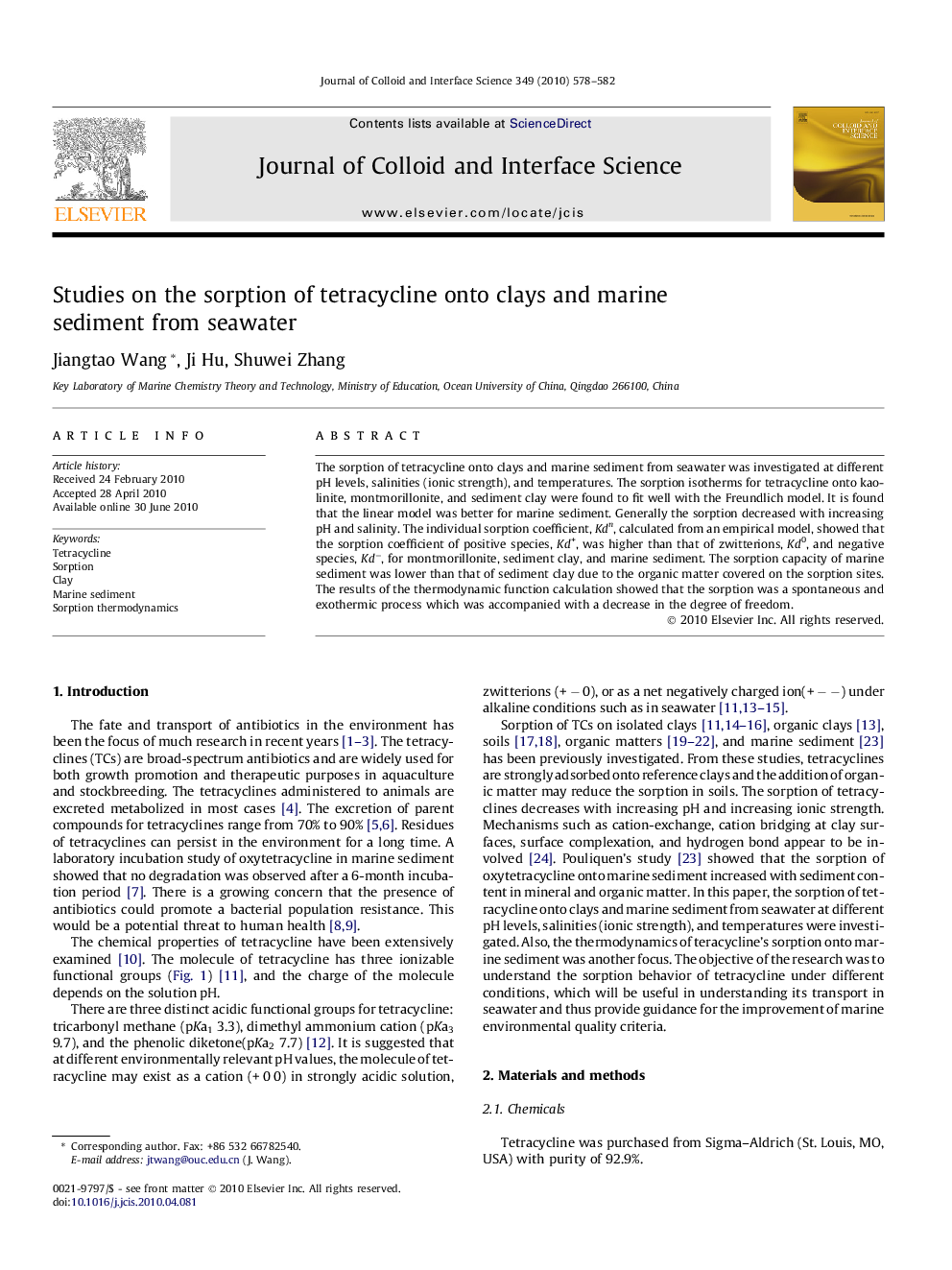| Article ID | Journal | Published Year | Pages | File Type |
|---|---|---|---|---|
| 609345 | Journal of Colloid and Interface Science | 2010 | 5 Pages |
The sorption of tetracycline onto clays and marine sediment from seawater was investigated at different pH levels, salinities (ionic strength), and temperatures. The sorption isotherms for tetracycline onto kaolinite, montmorillonite, and sediment clay were found to fit well with the Freundlich model. It is found that the linear model was better for marine sediment. Generally the sorption decreased with increasing pH and salinity. The individual sorption coefficient, Kdn, calculated from an empirical model, showed that the sorption coefficient of positive species, Kd+, was higher than that of zwitterions, Kd0, and negative species, Kd−, for montmorillonite, sediment clay, and marine sediment. The sorption capacity of marine sediment was lower than that of sediment clay due to the organic matter covered on the sorption sites. The results of the thermodynamic function calculation showed that the sorption was a spontaneous and exothermic process which was accompanied with a decrease in the degree of freedom.
Graphical abstractThis study investigated the sorption of tetracycline onto clays and marine sediment, and developed an empirical model that calculated the individual sorption coefficient (Kdn) for each species of tetracycline.Figure optionsDownload full-size imageDownload high-quality image (43 K)Download as PowerPoint slide
